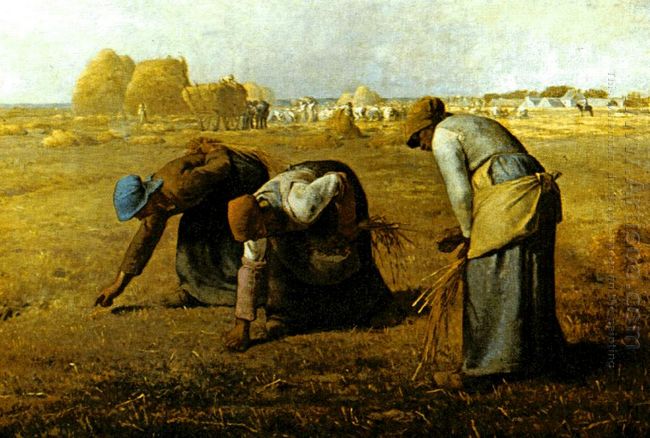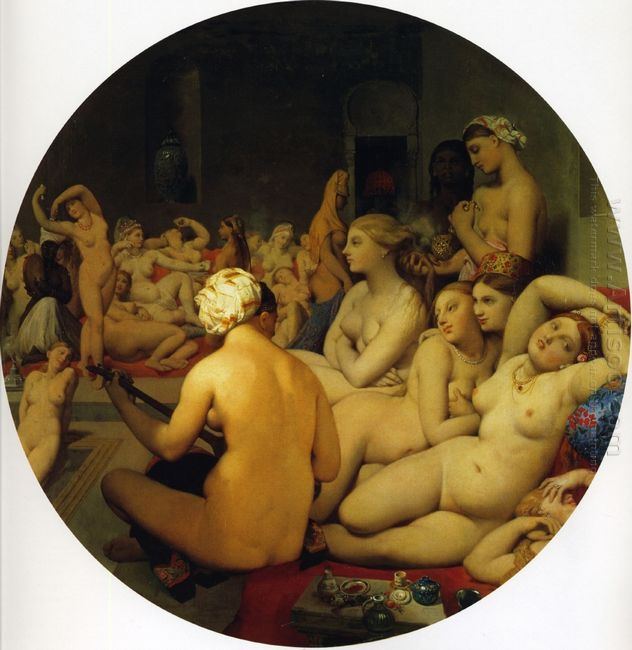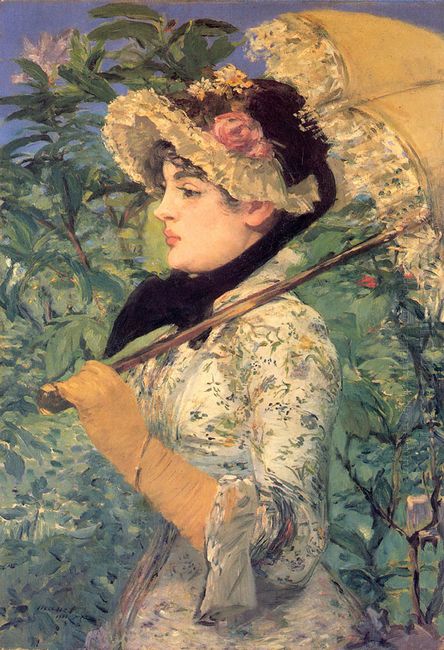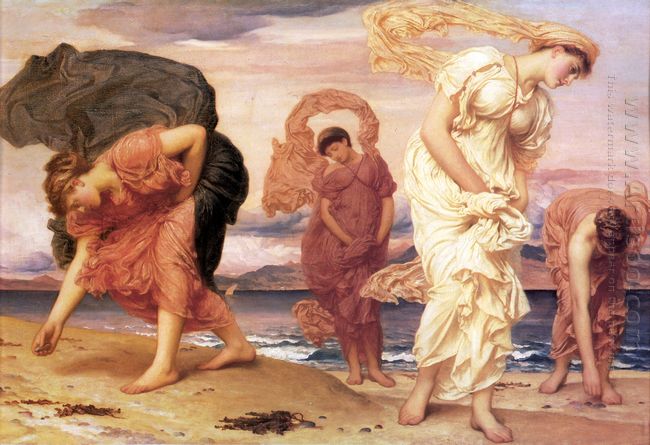The Gleaners was a piece of work that best represented the style of Jean Francois Millet. It did not show any dramatic scene. The main body of the picture was just three peasant women with the background of the busy working people and piled up rick. The three women made a sharp contrast with the distant people. They were dressed in coarse clothes and heavy wooden shoes, with a healthy body. They were not beautiful, let alone graceful. They just humbly bowed down to look for the scattered and the surplus grain in the field. However, this simple painting brought a solemn and unusual sense to the audience. Millet generally used horizontal composition to make the general characters show in the foreground of the wilderness.
The three main characters were respectively wearing red, blue, yellow hat, and their clothes were also taken this as the main tone, firmly attracting the attention of the audience. Their actions were full of coherence, calm and orderly. The light arranged in the left side of the painting made them become more and more strong and patient.
Perhaps the long-term working had made them feel very tired, but they still insisted on. Although the faces were hidden, their actions and bodies were more expressive -- patience, humility, and loyalty. In addition to Holland painter Vermeer in the 17th century, no one except Millet could be able to be expressive portrayal of ordinary people with dignified simplicity and general modeling. What he wanted to convey was the close relationship between people and the earth which the epic could not reach the naivety. From the three women wearing lines clothes and heavy wooden shoes, people could feel a dense religious emotion. In the face of survival, the humans piously bowed their heads. Although the distant flying birds still contrasted the idyllic conception, the dignified human bodies seemed to herald the survival pressure. It was this religious feeling that made The Gleaners surpass the pastoral scenery, and become a true great work with respect to human, the earth and survival.





